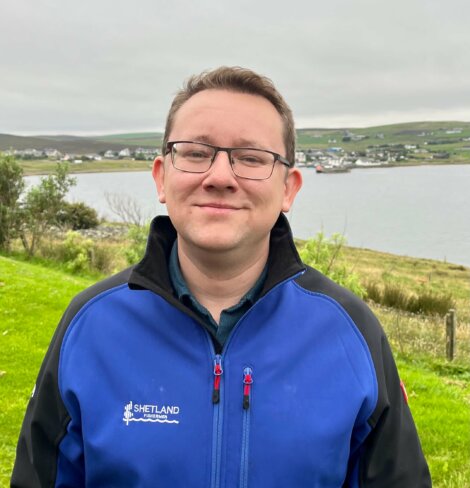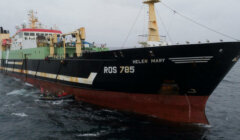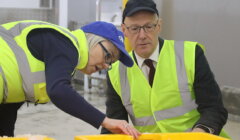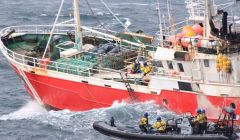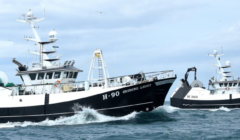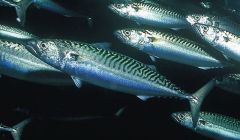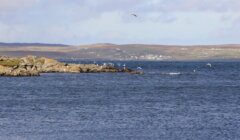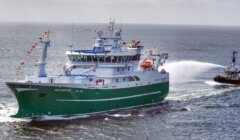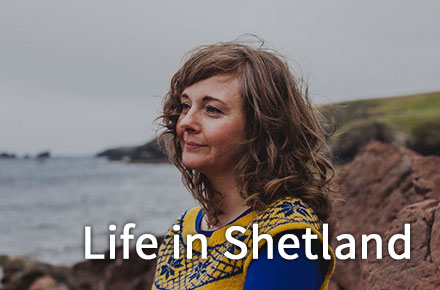Marine / Association’s warning over impact of development on fishing nursery areas
GREATER attention needs to be paid by planners and policy-makers to the impact of development on key nursery grounds for commercially important fish, according to the Shetland’s fishing association.
It comes with a number of developments planned in and around Shetland’s waters, from large salmon farms to offshore wind farm cabling and a second HVDC cable to the mainland.
The association’s warning follows a new study by UHI Shetland that has identified a series of shallow inshore areas where juvenile cod, haddock, whiting and plaice are prevalent but adult fish are absent.
The nursery habitats, characterised by depths of less than 50 metres, shelter from wave action and tides and sandy sediment, some of it covered by seaweed, are critical as data from the Shetland Inshore Fish Survey indicates that these growing fish move towards deeper commercial fishing grounds.
The key areas identified in the study by Louise Thomason and Dr Shaun Fraser include Weisdale Voe and Sandsound Voe to the south of the west mainland, Lunna and Dales Lees off the east mainland and Cole Deep and Skeetlie (Aith Voe) to the north of the west mainland.
“The identification and conservation of nursery areas in the nearshore Shetland environment has clear commercial implications for the sustainability of local fish populations and the wider marine ecosystem,” the authors said.
“Many of the identified areas are under unprecedented potential pressure due to large-scale energy projects and aquaculture proposals.”
They cite the consented Billy Baa project which would involve the consolidation of four existing salmon farms into a larger single development in the vicinity of the Sandsound Voe and Weisdale Voe nursery areas, as well as a similar proposal at Fish Holm close to Lunna and Dales Lees.
Become a member of Shetland News
In addition, the HVDC cable laid in Weisdale Voe, as well as other large-scale onshore developments and energy projects, have implications for the nursery areas.
“These areas are critical to the future of commercial fishing, which is the lifeblood of the Shetland economy, producing highly nutritious and climate-smart food,” said Shetland Fishermen’s Association executive officer Daniel Lawson.
“Both off and onshore developments are already having an impact, and this vital study by UHI Shetland highlights just how important it is for planners and policy-makers to consider the longer-term, knock-on effects of such projects on young and developing fish populations.”
Meanwhile responses are still being collected for Scottish Sea Farms’ proposed new Fish Holm salmon farm.
The company is proposing 12 cages with a circumference of 160 metres off Lunna Ness.
Two fishermen have lodged objections individually, while Shetland Islands Council’s (SIC) economic development service has advocated a “balanced approach” that takes into account the needs of all stakeholders – including inshore fishermen.
Scallop fisherman Billy Reid, who skippers the Accord, said the salmon farm would expand onto “valuable scallop fishing grounds, putting out livelihoods and business at risk”.
He also expressed concern about the “level of toxic pollution that could affect the larval stage of all aquatic species”.
Reid concluded in his objection: “The continual expansion of aquaculture is a threat to the fishing industry – an industry that the SIC says it supports and that the SIC planning department says should be taken into consideration”.
Kevin Sutherland, of the shellfish boat Concord, said the Fish Holm project would impact his livelihood and “shut off more areas from fishing”.
The SIC’s economic development service said salmon farming plays a “significant role” in the local economy though not only employment but supply chain opportunities.
However, it said the potential impacts on other marine activities, particularly inshore fish catching, have to be considered.
It wrote: “The commercial scallop fishery is the predominant fishery in the area of the proposed development.
“While the EIA [environmental impact assessment] has summarised the negative impact on the scallop fisheries sector as ‘minor’ and in terms of Shetland’s overall scallop and shellfish fishery as ‘negligible’, it is important to note that the negative impact primarily affects a small number of local fishing vessel operators.
“For these individual businesses, the impact is not minor.”
Scottish Sea Farms said the plan is to redevelop and expand an existing consented salmon farm (Fish Holm) and relinquish one other consented site (Collafirth 3) in Yell Sound.
It has reduced the size of the proposed pens after feedback from “fisheries stakeholders”.
Become a member of Shetland News
Shetland News is asking its readers to consider paying for membership to get additional perks:
- Removal of third-party ads;
- Bookmark posts to read later;
- Exclusive curated weekly newsletter;
- Hide membership messages;
- Comments open for discussion.
If you appreciate what we do and feel strongly about impartial local journalism, then please become a member of Shetland News by either making a single payment, or setting up a monthly, quarterly or yearly subscription.






